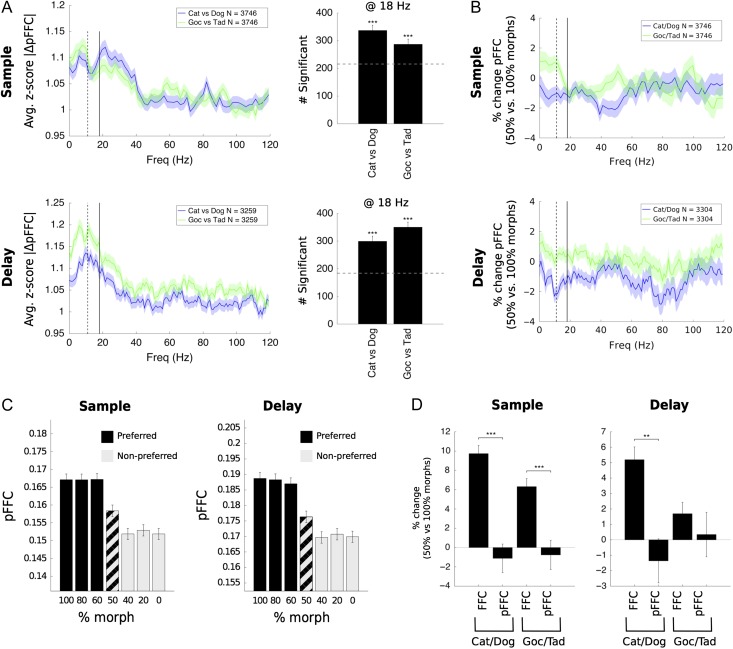Figure 8.
Partial coherence showed low-beta response to categories but not to boundaries. (A) Z-score statistic showing sensitivity of partial coherence (pFFC) to stimulus category (left). Significantly more electrode pairs responded to Cat/Dog and Goc/Tad categories than expected by chance (right). (B) Percent change in FFC in response to boundary versus nonboundary trials for Cat/Dog and Goc/Tad boundaries. Responses were not significant. (C) Morph-response profiles for low-beta partial coherence, showing a sharp category response and the absence of any boundary effect. Cat/Dog and Goc/Tad responses were similar and were merged. (D) Direct comparison of the boundary effect for pFFC to that for FFC, previously measured, shows that the pFFC boundary effect was significantly weaker in all cases. Significance in (A, right) was tested by binomial test against those values expected by chance at alpha = 0.05 (dotted line; no false discovery control). Significance in (D) was tested by Wilcoxon rank-sum test. In all cases, a Holm–Bonferroni correction was used for multiple comparisons. **P < 0.01; ***P < 0.001.

